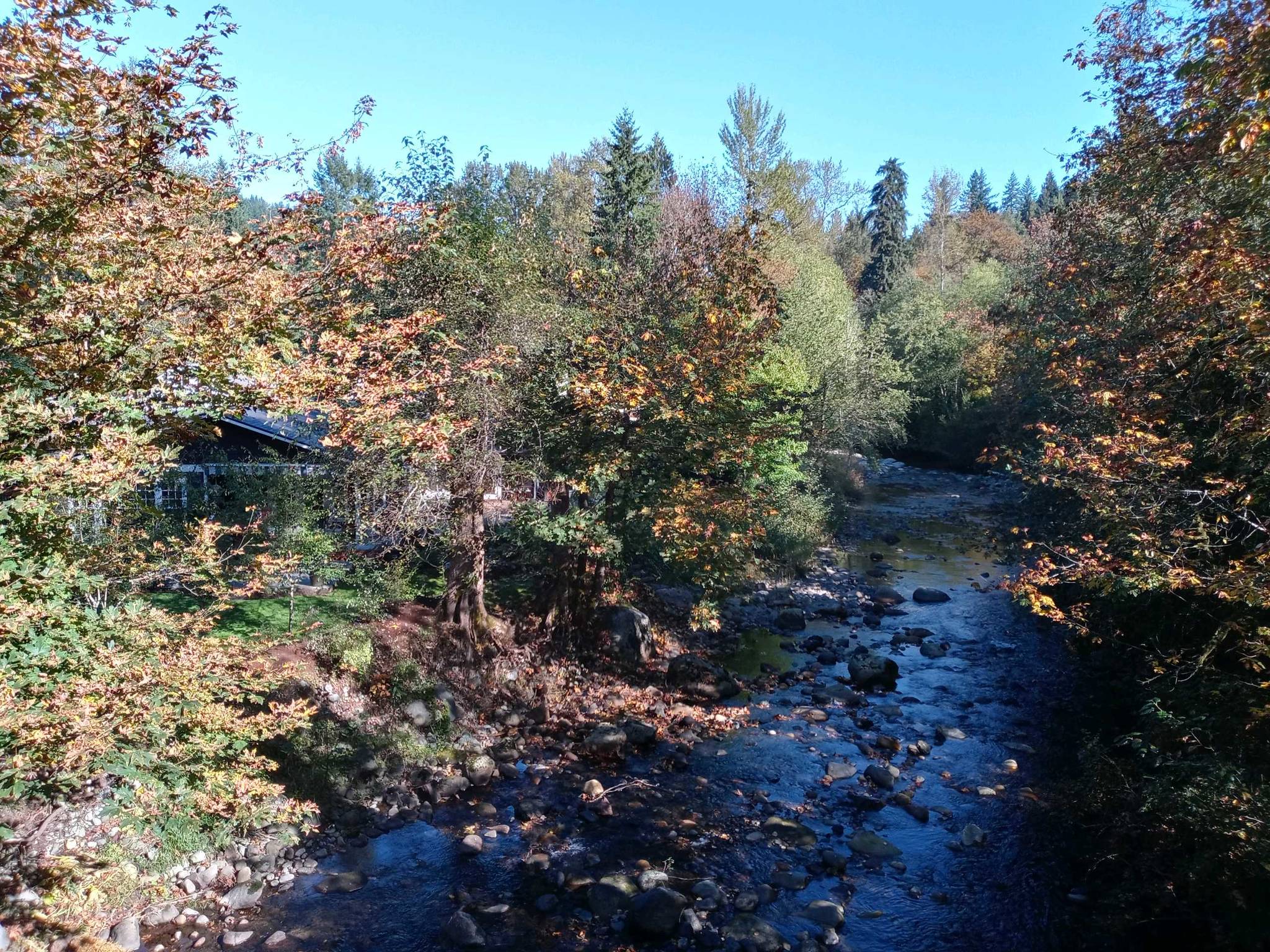In October 2019, the Snoqualmie River breached its banks earlier than usual, flooding swaths of the valley ahead of the Halloween weekend. This rainy season is projected to bring some flooding too, and preparations are already underway.
King County is busy getting ahead of the flood season, said Michelle Chatterton, spokesperson for the county’s Office of Emergency Management.
“Based on what NOAA has told us, we are expecting to see similar weather patterns to what we saw in 2019, early 2020,” Chatterton said. “Hopefully we don’t see that, but it does look like we might see more flooding than we do normally.”
It’s difficult to predict flooding, said Steve Reedy, a meteorologist with the Seattle Weather Service. This October is different from last year. Last October, there was significant rain throughout the month, which saturated the ground. A dry September this year means rivers have more room to swell with rains.
And there’s no major precipitation systems moving in — yet.
“We really don’t see anything on the horizon for the next month,” Reedy said.
But through December, Reedy expects a La Nina winter, which could indicate a cooler and wetter season.
“As we get into the winter, if this pans out, then there will certainly be plenty of moisture in the area,” he said.
Flooding in any one area will rely on its unique geography, but Reedy expects there to be a heightened chance for some flooding in east King County and across Puget Sound.
Chatterton said the county is prepared for flooding through training, briefings and meetings with various departments. They’ve also been educating people on flooding, and encouraging people to sign up for flood alerts.
Cities have similarly been preparing. North Bend is stocking up on sand bags, clearing gutters and inspecting culverts for blockages and damage.
October is busy for farmers around the valley, said Cynthia Krass, director of the Snoqualmie Valley Preservation Alliance. Most are tied up with autumn harvests and preparing their Halloween offerings.
Farms are also dealing with coronavirus safety guidelines and restrictions. Most are still encouraging people to come out for autumn activities like picking pumpkins. Many farmers have had to retool their business models as restaurant business has dried up.
There’s been a groundswell of interest since the spring in programs that sell produce subscriptions directly to residents. And farmers have been planting more shelf-stable produce, which can last longer in pantries and fridges.
“The farmers were willing to revise their crop planting plans to be more oriented toward subscription,” Krass said. “The demand for local food has continued. There was a big spike in the spring, and then it seems to have been sustained.”
It’s unclear whether there will be more early flooding this year, and how that could impact farms.
The flooding last October came in the crucial weeks before Halloween, wiping out holiday and typical crops alike. Crops touched by flood water can’t be sold, as federal guidelines consider such produce contaminated.
Farmers are used to floods in the valley, but they typically come in November, allowing farmers time to finish fall harvests. But two of the last three years have seen earlier than normal flood seasons, Krass said.
“It seems like it’s coming earlier every year,” she said.
Last year’s October flooding was followed by more in January and February. Climate scientists are expecting Puget Sound winters to be filled with heavier rain events.
Last year, the University of Washington’s Climate Impacts Group released a localized summary of a United Nations report on climate-driven weather changes. It predicts that storms will increase by up to one-third by 2080 as warm air holds more water.
The Snoqualmie Valley Preservation Alliance is trying to provide farmers and residents of the valley with a more comprehensive river gauge system.


